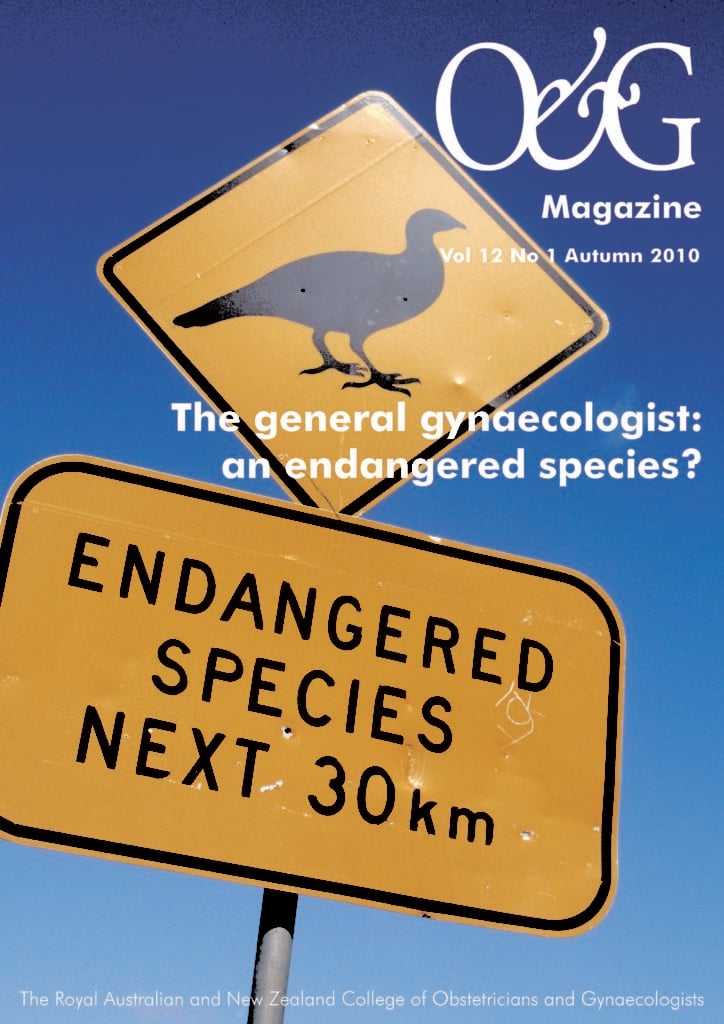‘How many hysterectomies did I do last year? How many of those were laparoscopic? How does my complication rate compare to others?’ Prompt and reliable answers to those questions are crucial to gynaecologists interested in further developing their surgery and also form the basis of enhancing every gynaecologist’s surgical skills.
If you don’t know what your conversion or complication rate is, how could you possibly improve it?
Clinical audit is a technique to receive feedback about outcomes from treatment. In order to maximise its learning effect on surgeons, feedback needs to be measurable, very specific and delivered in a non-threatening way. This is much more helpful than ‘feedback’ that we often receive from well-meaning colleagues, such as: ‘I am not surprised that you had to convert this operation to open.’
The benefits of clinical audit have been demonstrated many times in various specialties, but most work to date has been done in colorectal and vascular surgery. For example, a surgical audit on 600 colorectal patients from Victoria treated by 13 colorectal surgeons revealed that, overall, the leak rate, the percentage of patients requiring to be taken back to the operating theatre and the mortality was significantly reduced after clinical audit. Another study investigated mortality resulting from aortic aneurism surgery. Mortality was 9.6 per cent in patients treated in 1999 and 2000, but significantly reduced (8.3 per cent) in patients who had their surgery in 2001 after feedback about surgery outcomes was given to the participating surgeons. I am not aware of any data on outcomes of a clinical audit in gynaecology surgery for benign diseases.
We know of four different ways of audit
Standards-based audit
Unselected data is collected over a certain time (for example, six months) to measure current practice against defined standards; for example, what is the percentage of my patients being converted from laparoscopy to open surgery for hysterectomy? Ideally, a gynaecologist would then be able to compare her/his data with data from colleagues in an anonymous way. CuSuM (cumulative sum control chart) analysis refers to the possibility of plotting unwanted outcomes (for example conversion) against time to see if performance improved.
Critical incident monitoring
Incidents will trigger a review process – a multidisciplinary team discusses individual cases to reflect upon the way the surgical team functioned. Incidents are pre-defined (for example, intraoperative viscous injury, take back to the operating theatre, unplanned admission to ICu, etc). Nowadays, most public and private hospitals require clinicians to participate in morbidity and mortality (M&M) meetings. In our unit, information shared amongst the participants of the M&M meeting is privileged (must not be disclosed to third parties).
Peer review
Individual, selected cases are discussed in confidence between colleagues if the clinician is uncertain whether best care was given (benefit of hindsight).
Patient surveys
Patient surveys are used to obtain consumers’ views about the quality of care they have received.
How can gynaecologists interested in auditing their performance get started?
- A gynaecologist can start a standards-based audit straight away by entering her/his surgical and/or obstetrics cases into a database. Data to be entered will need to include a patient’s identification code, treatment and outcomes as well as confounding variables (factors that may influence outcomes, for example, body mass index, existing co-morbidities, etc). Newer versions of databases are web-based, provide total anonymity, are secure (SSL certificate, password protected) and allow for benchmarking against peers and national averages. One such web-based database with fully automatic comparison algorithms has become available for general gynaecology and obstetrics recently (surgicalperformance.com).
- Every gynaecologist performing surgery should participate in a morbidity and mortality meeting. Index cases (cases with an unwanted outcome) and patterns of failure are discussed. This design should allow for the opportunity to improve knowledge, to identify surgical errors or to identify inadequate systems and processes within the healthcare facility that need to be improved to optimise outcomes. For example, it may be identified that a recently increased rate of intraoperative nerve injury is attributable to ‘wear and tear’ of old surgical retractors. Replacement of this old equipment should result in a return to an adequate nerve injury rate.
- Ask a colleague of your choice to discuss a couple of cases in confidence. Sometimes it is also helpful to join someone in the operating theatre to see how other people approach different situations. For example, I went to study some surgical procedures at the Memorial Sloan-Kettering Cancer Center, New York, in July last year and the experience (What do they do better? What do we do better? Where do these surgeons have a different approach and why?) has been fantastic.
- Surveys can be sent after surgery to find out about patients’ “hospital and doctors’ experience”. For the last three years, I survey all my patients at six weeks after surgery. Patients are quite willing to share their experiences and I have been able to use this information to improve systems and processes in the running of my practice, to make them most convenient to my patients and to achieve the highest possible patient satisfaction ratings.
A number of other audit pathways exist for gynaecologists. My personal experience with audit has been exciting and improvements based on the audit have involved additional work and training, but have always been extremely worthwhile. I don’t think I’d practise gynaecological oncology again without the experience of continuing audit.
Professor Andreas Obermair is a gynaecological oncologist in Brisbane and developed the SurgicalPerformance.com project for the self-audit of O and G specialists.






Leave a Reply